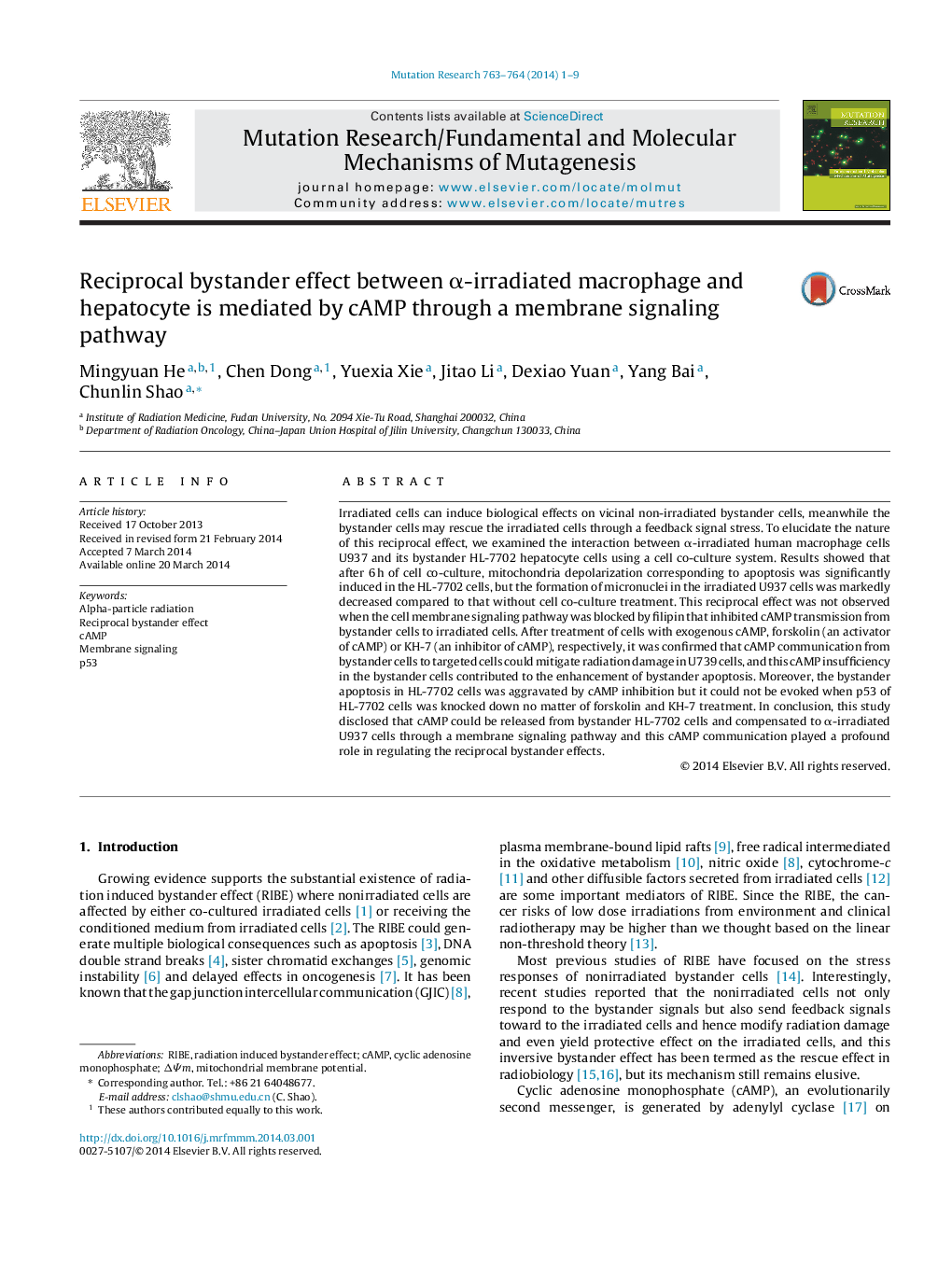| Article ID | Journal | Published Year | Pages | File Type |
|---|---|---|---|---|
| 2146279 | Mutation Research/Fundamental and Molecular Mechanisms of Mutagenesis | 2014 | 9 Pages |
•α-Irradiation induced reciprocal effects between macrophage and hepatocyte cells.•cAMP played a protective role in regulating the reverse bystander effect.•cAMP communication contributed to the reciprocal effects via membrane signaling.•p53 was required for cAMP-regulated bystander effect in the recipient cells.
Irradiated cells can induce biological effects on vicinal non-irradiated bystander cells, meanwhile the bystander cells may rescue the irradiated cells through a feedback signal stress. To elucidate the nature of this reciprocal effect, we examined the interaction between α-irradiated human macrophage cells U937 and its bystander HL-7702 hepatocyte cells using a cell co-culture system. Results showed that after 6 h of cell co-culture, mitochondria depolarization corresponding to apoptosis was significantly induced in the HL-7702 cells, but the formation of micronuclei in the irradiated U937 cells was markedly decreased compared to that without cell co-culture treatment. This reciprocal effect was not observed when the cell membrane signaling pathway was blocked by filipin that inhibited cAMP transmission from bystander cells to irradiated cells. After treatment of cells with exogenous cAMP, forskolin (an activator of cAMP) or KH-7 (an inhibitor of cAMP), respectively, it was confirmed that cAMP communication from bystander cells to targeted cells could mitigate radiation damage in U739 cells, and this cAMP insufficiency in the bystander cells contributed to the enhancement of bystander apoptosis. Moreover, the bystander apoptosis in HL-7702 cells was aggravated by cAMP inhibition but it could not be evoked when p53 of HL-7702 cells was knocked down no matter of forskolin and KH-7 treatment. In conclusion, this study disclosed that cAMP could be released from bystander HL-7702 cells and compensated to α-irradiated U937 cells through a membrane signaling pathway and this cAMP communication played a profound role in regulating the reciprocal bystander effects.
